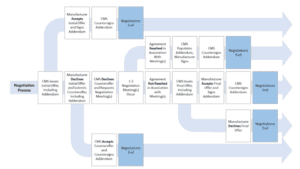How EBM sees the market, with flexibility returning

Major independent broker EBM says pricing increases for many commercial insurance lines are moderating, and while premium reductions are unlikely, further stabilisation for most classes is possible in the near-term.
The steep reductions in underwriting terms seen in recent renewal seasons “are not expected to remain in play,” Perth-based EBM says, forecasting that moderation in commercial insurance price growth will continue throughout the year.
“Across a number of lines, insurers are beginning to indicate that they are keen for new business, and underwriting will be more flexible. This is starting to eventuate in the market for some lines, but is tentative.”
Australian market rate pricing ranged from rollover through to 7.5% increases in the second quarter on low-risk properties, though EBM says insurer appetites have remained low for less attractive risks.
Some commercial lines remain “incredibly challenging” – in particular cyber and high-hazard property, where premiums in high fire-load and catastrophe-exposed areas jumped by up to 25%. Those hard market conditions are expected to continue in cyber, as well as in some liability covers, professional indemnity and complex property.
The impact of the devastating $5 billion-plus East Coast floods “is expected to be felt during the upcoming renewal seasons”.
“Premium reductions are unlikely. Instead, further stabilisation of current rates for most classes may be evidenced,” a new EBM market summary report says. “Following four years where the hard commercial insurance market saw capacity constrict and pricing increase, there are signs of improving competition and price moderations.
“Some risks are being moved back onshore to Australian insurers.”
Inflation also means valuations became a major underwriting focus, and EBM says property pricing “will continue to rise during the upcoming renewal season and into 2023”.
Here’s how EBM sees the market:
Professional and financial lines remain under significant pressure, though some price moderation is being evidenced in select classes. Capacity for large accounting firms, financial planners, lawyers, valuers, mortgage brokers and construction professionals remain challenging.
Several insurers exited the class and the remaining insurers are “not actively pursuing new business opportunities” and imposing rate increases, reductions in capacity, lower sub-limits, coverage restrictions and increased deductibles.
Directors’ & officers: Pricing peaked in late 2021 and in Australia, with premium increases for private company renewals now generally below 10% for average risks.
“Industries previously avoided due to overall heightened risk from the pandemic are now being considered,” EBM says. Targeted exclusions such as insolvency or policy limitations are likely amid growing risk ESG, cyber breaches and covid risk exposure.
Cyber: Pressure continues, though rate increases are expected to be less severe than in 2021 when premiums doubled in the second half as capacity was slashed. There is also likely to be more stability in underwriting requirements.
Insurers have limited their sum insured values, and security measures and deductibles have increased. Cyber insurance for legal services, manufacturing, wholesale, and distribution sectors continues to be particularly difficult to secure.
Marine: EBM expects conditions to remain difficult, noting shipment values have spiked on increased prices for commodities such as wheat.
“Inflation is causing the cost of cover to rise. The reason is simple – the cost of loss is rising,” it said.
Ocean freight costs have jumped by around a third, and there have been port closures and supply chain disruptions. Commodity, labour, fuel and transport costs are all up.
Claims are being impacted by higher repair and replacement costs and business interruptions are longer due to disrupted manufacturing. Capacity restrictions made it difficult to place excess coverage over $1 million primary placements.
“These inflationary pressures mean marine businesses may be risking underinsurance.”
Construction: Inflation, supply pressures and natural catastrophes continue to drive up premiums for the construction industry, though there are signs new capacity is starting to return.
“Across all construction lines, there will be a stabilisation in rates and policy coverage requirements for most clients,” EBM says.
In Australia, rebuild costs increased as much as 10% for large-scale and complex commercial buildings.
“As insurers looked to pass these costs on to policyholders, premiums continued to rise,” EBM says. Multiple underwriters for a single policy are more common, “adding layers of complexity and driving up premium costs”.
Almost a quarter of all insolvencies stemmed for construction businesses in the past year, and increased professional indemnity claims – particularly in engineering, building surveying and in design and construct areas – contributed to hard market conditions.
Farm: The 2022 floods caused catastrophic losses, including livestock and machinery, and EBM expects these costs to put further pressure on premiums.
“Negotiating farm insurance for both renewals and new business remained difficult in the second quarter. Significant rate and premium increases have been applied, while capacity has decreased.
“These conditions are expected to persist for the foreseeable future.”
A number of insurers have either exited the market or reduced their overall capacity. Insurers continue to scrutinise risks more thoroughly and request additional information.
EBM says there is a rising risk of underinsurance on the rising costs of “fertiliser to feed, fuel to farm hands, fencing to front-end loaders and even food for the homestead.”
Liability: Securing liability cover remains challenging, with Australian clients who have high claims-frequency exposure seeing prices increase by up to 20%.
Waning underwriter appetite resulted in major programs “undergoing substantial restructuring of layers”, while risk selection was even more pronounced than in the past.
“It is expected that hardening conditions in the liability market will continue,” EBM says.




